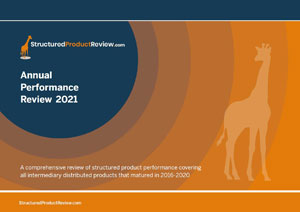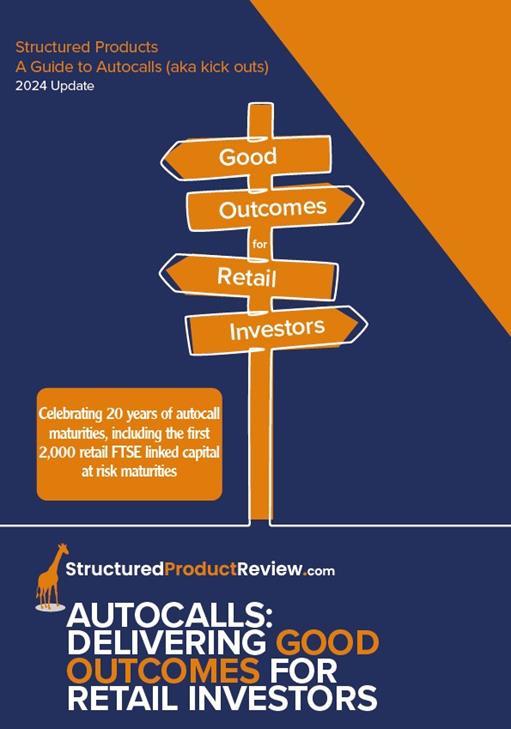Alex Dempster 09/03/2022
A January 2019 article by Jeff Prestridge, personal finance editor of the Mail on Sunday, discussed possible components of a diversified investment portfolio, including structured products, using the FTSE 100 linked 10:10 Plan as an example.
Options 1 and 2 of the February 2019 issue of the 10:10 Plan matured on 22 February 2022, so we thought it would be interesting to revisit the article and establish how different assets have performed during the three extreme years since the article was published.
We have used the start date of the 10:10 Plan, 22 February 2019, as the opening point for our analysis and assumed an initial amount of £10,000 was invested into a cash holding earning 1% per annum, a gold fund; the Wisdom Tree Gold, HSBC’s FTSE 100 Index Tracker fund and the 10:10 Plan. The level of the FTSE 100 on the starting date was 7,178.60.
All the investments could be enchased at any time but the 10:10 Plan was designed to mature early on any anniversary, from the second anniversary onwards provided that the FTSE 100 was above a defined reference level – 102.5% of the 22 February 2019 FTSE level for Option 1 (reducing by 2.5% year thereafter, down to 82.5% in year ten), 100% for Option 2 and 105% for Option 3.
Whilst irrelevant to the outcome of the 10:10 Plan, the first anniversary was at a time when the reality of the Covid pandemic was coming to the fore. Thirteen months into the investment term, on 23 March 2020, Boris Johnson announced the first national lockdown and this news saw the FTSE 100 Index close at 4,993.89 - its lowest closing level since the financial crisis. At times like these, the ‘safe havens’ of gold and cash would, with the benefit of hindsight, have proven favorable.
With the markets in turmoil, the stock market linked element of diversified portfolios was significantly depressed and that included the surrender values of all three options of the 10:10 Plan. Whilst traditional equity investments such as holdings in a tracker fund would not get back to original value until the market had recovered, holders of the 10:10 Plan would enjoy attractive returns should the market recover on one of the following eight anniversary dates. The potential gain would increase with each passing year – by 9.44% for Option 1, 12.28% for Option 2 and 14.51% for Option 3.
Roll on another eleven months, and after almost a year of lockdown, restrictions, masks and staying two-meters away from everything and everyone, the first possible kick out date for the 10:10 Plan arrived. With the FTSE 100 Index closing at a level of 6,612.24, a 32% increase from the March 2020 low, but still 566.36 points away from the 10:10 Plan maturity triggers, none of the Options matured.
However, one year later, despite continuing pandemic implications - let alone other geopolitical factors - the FTSE 100 Index closed on the third anniversary of the 10:10 Plan at 7,494.21 triggering the maturity of Option 1 and Option 2 with the £10,000 investment returning £12,832 and £13,684 respectively. At this juncture, the value of equivalent holdings in cash, gold and the FTSE 100 tracker were £10,300, £12,748 and £11,555 respectively.
Given that the FTSE 100 Index needed to be above 7,537.53 for Option 3 to mature, it will run for at least another year when, if the index is above the required level it will mature with a 58.04% gain, if not a 72.55% gain a year later, increasing by 14.51% for each year thereafter, for up to 10 years. For those who did not wish to wait, the surrender value for a £10,000 investment in Option 3 on the third anniversary was £12,666 net of the early surrender charge.
For all three options, outside of an early surrender or the collapse of the counterparty bank, Goldman Sachs, investors would only suffer a loss if at the end of ten years the maturity parameters had not been met and the FTSE 100 Index was more than 30% lower than the Initial Index Level. This no doubt provided much needed peace of mind to 10:10 Plan investors during the turmoil of the last three years.
Investments like the 10:10 Plan, which are commonly referred to as autocalls or kick-outs, have become the mainstay of UK retail structured product market where more than 1,250 FTSE linked plans have matured to date, with all but 12 of these maturing positively. As Josh Mayne, Structured Product Technician at Lowes Financial Management puts it “For those who are confident that the FTSE will rise, but don’t know by how much, or when, longer duration FTSE linked autocalls have, with very few exceptions, proven to be the perfect complement to a diversified portfolio in the past”.
Experienced investors will diversify portfolios in the knowledge that they expect equities to outperform over the medium to long-term whilst accepting that they do not know how long that might be, or to what extent. Where investing long in the market produces gains correlated with said market, realisable at any time, autocalls reward for time in the market, even if it the market does not perform well. The last few years have demonstrated this point exceptionally well and this will continue to be the case in the coming years, unless the markets suffer a long-term depression.
The latest issue of the 10:10 Plan uses a variation of the FTSE 100 Index – the FTSE CSDI, which tracks the same shares in the same proportions and is expected to continue to be very closely correlated to the FTSE 100 if the dividend yield of the shares in the index are in line with the 20 year average of 3.5% per annum. The three options of the 10:10 Plan April 2022 can mature from the second anniversary with gains for each year held of 7.8%, 9.4% and 11.4% respectively. Further details can be found at StructuredProductReview.com.
FTSE 100 Index data sourced from Investing.com. HSBC FTSE 100 Index fund and WisdomTree Gold ETF data sourced from FE Analytics.
Structured investments put capital at risk.
Past Performance is not a guide to the future.
Lowes has provided input into the concept, development, promotion and distribution of this Plan. The provider’s charges/fees are built into the terms of the investment - Lowes has a commercial interest in the Plan as a result of its involvement in its development and promotion. All Plan returns are stated after allowing for the provider’s charges/fees. Where Lowes is involved in advice on or the intermediation of this investment to retail clients, it will not receive any payment from Mariana for its input but instead, equivalent funds will be donated to UK registered charities at the direction of the Lowes Charity Committee, the annual report for which is available on request. The aim of developing Plans in co-operation with providers, with Lowes input, is that they should be amongst the best available in the market – and, as such, be granted ‘Preferred’ status, on their merits. Lowes has robust systems and controls in place to ensure that it manages any actual or potential conflicts of interests in its activities.
Also in this section
- How old is too old? Are structured products to die for?
- Product focus - October 2024
- Q3 2024 Issuance
- Q3 2024 maturity results
- A share of spread bets on steroids?
- Product focus - September 2024
- Maturities of the month - August 2024
- Right on time
- Product focus - August 2024
- Keep calm and zoom out
- 2,000 and counting
- Q2 2024 maturity results
- 20 years of autocall maturities
- Product focus - June 2024
- Fixed income or interest?
- Maturities of the month - May 2024
- The barrier debate - revisited
- Product focus - April 2024
- Maturities of the month - April 2024
- Time to call
- I don't believe markets are ever too high for Structured products!
- Notes on counterparty exposure
- Return of Nikkei
- Q1 2024 issuance
- Q1 2024 maturity results
- Structured Products – AAAAAGH!
- Hop in CIBC
- Re-enter Santander
- How to build a financial fortune - revisited
- Issuance in 2023
- Where's the risk?
- Questionable offerings
- Challenging the case against structured products - 'Loss of dividends'
- Navigating the investment landscape
- Challenging the case against structured products - Counterparty risk
- 6-year autocalls approaching final destination
- 1,750 FTSE capital at risk autocall maturities
- The leopard that changed her spots
- Q3 2023
- Challenging the case against structured products - Keydata
- Dilemmas for UK IFA's and the unique role of Structured Products
- 'High charges'
- Precipice bonds
- Intro
- FTSE 100 Contingent Income
- Indexing the indices
- Something different
- Investing through volatility
- 100 10:10s
- The best or worst?
- The 10%/25% 'Rule' that never was
- Structured products and the yield curve
- Fixed income: Capital at risk?
- Prospects for UK inflation - and fun with A.I!
- The Barrier Debate
- More Deposits for now
- Last of the Americans
- What if?
- Time heals all wounds, we hope...
- How to diversify portfolios using structured products?
- The Proof Is In The Pudding...
- Debunking Structured Misconceptions
- 1,500 FTSE Capital-at-Risk Autocall Maturities
- Q3 2022 Maturity Results
- What do we prefer?
- Deposits vs Capital ‘Protected’
- There’s time yet…
- Where did you invest your clients?
- A Six-Month Reflection
- Return of the Rev Con
- Happy 2nd Birthday FTSE CSDI
- Q2 2022 Maturity Results
- The best and worst yet still the best
- Critique my Suitability - Mariana 10:10 Plan June 2022 (Option 2)
- 10/10 for 55 10:10’s
- Q1 2022 Maturity Results
- 'How to build a financial fortune': a follow up
- Critique my Suitability - Mariana 10:10 Plan April 2022 (Option 2)
- 2021 Capital-at-Risk Autocall Maturity Review
- An unwelcome return...
- CSDI's First Birthday
- Bon Anniversaire
- Introducing the FTSE Custom 100 Synthetic 3.5% Fixed Dividend Index
- Q3 2021 Maturity Results
- Critique my Suitability - Mariana 10:10 Plan October 2021 (Option 2)
- Blurring the lines...
- Beware of false knowledge; it is more dangerous than ignorance
- Good news, bad news...
- Certainty is Certainly a Benefit
- Critique my Suitability - Mariana 10:10 Plan September 2021 (Option 2)
- A Twenty-Year Progression
- Q2 2021 Maturity Results
- Nine 8:8s Post Positive Returns in Falling Markets
- Critique my Suitability
- Q1 2021 Maturity Results
- Morgan Stanley’s Marvelous Maturity Medley
Current Products
We review the UK's retail structured investment sector, providing pertinent support for Professional Advisers and relevant research tools.
View all ⟶


